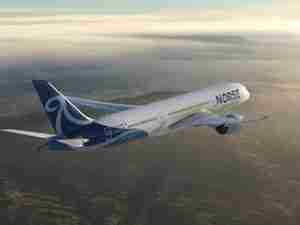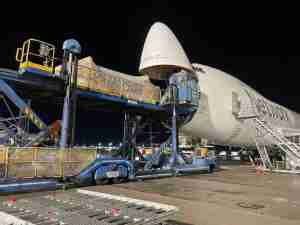An American Airlines Group Inc. flight crew taxied across a John F. Kennedy International Airport runway without clearance on Jan. 13 as a Delta Air Lines Inc. plane was accelerating for takeoff, prompting it to make a high-speed stop, investigators said Friday.
In an unusual step, the National Transportation Safety Board said it had issued a subpoena requiring the American pilots to submit to an interview after they declined repeated requests, the agency said in its preliminary update. The pilots and their union, the Allied Pilots Association, have objected to being taped in the interview, the NTSB said.
The event is one of two serious runway incidents in recent weeks being investigated by the NTSB.
Interviews with the crew are “particularly important,” the NTSB said in a separate statement, in part because the device capturing the American flight’s cockpit sounds was overwritten before investigators could get access to it.
“Although the NTSB offered to both procure a court reporter to produce a verbatim transcript of the interviews and provide the opportunity for each crew member to review the interview transcripts for accuracy, the American Airlines flight crew members have so far refused to cooperate with providing recorded interviews,” the NTSB said.
Union Position
In a statement, the APA union said “the introduction of electronic recording devices into witness interviews is more likely to hinder the investigation process than it is to improve it.”
Recordings can lead to less candid responses from witnesses, APA said, and the fact that recordings might be publicly available after an investigation could lead crew members who are otherwise willing to testify to decline to take part.
The union said it wants to cooperate. “We are confident that an acceptable solution to this issue exists that would satisfy the needs and concerns of all parties involved in these investigatory interviews,” it said.
The NTSB has legal powers to compel those involved in its investigations to provide testimony and documents, and can record interviews if it wishes. But it normally tries to resolve disputes voluntarily.
The two planes, which held a total of 308 passengers and crew members, were as close as 1,400 feet from each other during the nighttime incident, the NTSB said.
The American crew had been instructed to cross a different runway as it moved across the airport to depart, the NTSB said.
Warning System
A warning system that tracks aircraft moving on the ground alerted the airport tower of the potential for a collision and a controller ordered the Delta plane to halt its takeoff.
The Delta jet, a Boeing Co. 737-900, traveled at a speed of 92 miles (148 kilometers) an hour and was 2,700 feet away when the American plane crossed its runway, NTSB said. It had reached a speed of 115 miles per hour when pilots began braking.
The American plane, a Boeing 777-200, had rolled past the runway by the time the Delta crew stopped, the NTSB said.
The NTSB is also investigating a Feb. 4 incident at Austin-Bergstrom International Airport in Texas in which two jets came within 100 feet of colliding.
A FedEx Corp. cargo jet flew almost directly above a Southwest Airlines Co. plane after an apparent mix-up, according to the safety board. In that case, the FedEx Boeing Co. 767-300 had been cleared to land on the same runway where the Southwest 737-700 was taking off in heavy fog.








